Being a traditionalist, one might spring for a new Toyota Tacoma TRD Pro, Jeep Wrangler Rubicon, or an INEOS Grenadier as their ideal adventure rig.
However, there’s a whole host of other vehicles, like vans, that should be considered if you don’t need a dedicated 4x4. One of the newest options is the new 2025 Volkswagen ID. Buzz EV, which just debuted in North America.

I went to San Francisco, California to attend the 2025 Volkswagen ID. Buzz EV first drive program. I wanted to see how it stacked up against the short-wheelbase German-spec early 2024 Volkswagen ID. Buzz Pro my husband, Andy Lilienthal, and I drove throughout Europe as a test for over 5,000 miles.
There are differences between the North American (NA) ID. Buzz and its German-market sibling. After living with our European ID. Buzz Pro for nearly three weeks overseas, we can confidently say van platform would make a solid EV road-tripping contender, if you’re patient and allow extra charging time during long-distance driving days.
The 2024 Baltic Sea Circle Rally
Andy and I competed in a 16-day, nine-country, 5,000-mile competition known as the Baltic Sea Circle Rally (BSCR), run by the Superlative Adventure Club rally organization. Here, we utilized the above-mentioned ID. Buzz. Andy was the driver, and I was the navigator of our team, Crankshaft Culture. We were the only all-electric entry this year, as well as the first EV team outside of Europe to compete in this endurance event.

The BSCR is the northernmost rally in the world. It started in Germany and traveled through places like Nordkapp (the North Cape), Norway, two Arctic Circles, and more, before finishing back in Germany. We wanted to see if Volkswagen’s long-awaited brother to its famed old-school T2 Bus (Transporter van) would be a solid overlanding vehicle with many amenities for campervan enthusiasts.
What better way to do this than to camp within the ID. Buzz EV during these long-distance backroads event. With no GPS and only paper maps, teams had to plan their route, overnight accommodations, and when to eat. We put our Euro ID. Buzz to the test, and it proved its worth as we successfully completed the event. We also raised $3,239 USD for the The Jessi Combs Foundation, far surpassing the required 500 € ($544 USD).
Volkswagen ID. Buzz Comparative Figures
As mentioned, there are a host of differences between the European vans and those coming to North America. For example, NA will only get the three-row long wheelbase ID. Buzz EV. Europe gets a short-wheelbase (SWB) two-row variant (the kind we had on the rally) which seats five but also gets its longer derivative.
North American variants measure 195.4 inches in length, 76.2 inches in height, and have a 78.1 inches width without mirrors. It features a 127.5-inch wheelbase and is available in both 4Motion all-wheel-drive and rear-wheel-drive iterations. We’ll focus on the more adventure-centric AWD 4Motion variant here.
Our European SWB model was 185.5 inches long, 76.2 inches tall, and 78.1 inches wide without mirrors. Our rally ID. Buzz also had a 117.6-inch wheelbase. It’s 9.9-inches shorter than the long wheelbase version is being sold here. NA models feature an EPA-estimated range of 231 miles for 4Motion AWD models and 234 miles for RWD variants.
Early-gen 2024 German models were said to have up to 250 to 263 miles of range (402 to 423 kilometers), according to the Worldwide Harmonized Light Vehicle Test Procedure (WLTP). The German-spec Volkswagen ID. Buzz also has various trims, but the one we drove is now obsolete—the Euro ID. Buzz went through a mid-year refresh (going from 201 HP to 282 HP, same as the RWD NA version) so our rally rig type is no longer sold as new.
Our German VW ID. Buzz Pro had a 30-minute charge time from 5% to 80% SOC (state of charge), if you charged with a at least a 170kW charger (170kW is the maximum capacity this iteration handled). The North American-spec ID. Buzz increases the DC acceptance rate to 200kW with a DC fast charger rate of 10-80% in 26 minutes. It also has a larger battery.
2024 Volkswagen ID. Buzz Pro EV Rally Statistics
With 36 rally charges under our belts, we learned a lot about the early-2024 German-spec ID. Buzz’s range, limitations, ease of use, and more. It was simple to charge, once we got chargers to accept our apps, charging cards, or other methods of payment.
In short, we downloaded 16 total apps and used 13 of them, plus four charging cards to finish the 5,000-mile rally as all but two of the charge stations we used required proprietary apps, cards, or keys to charge.

VW said our German ID. Buzz should get up to 263 miles (423 kilometers) on a full battery . After 17 charges to 100%, we averaged 245.70 miles of total capacity (395.41 kilometers) per charge. Conversely, we averaged 217.74 miles (350.42 kilometers) of range when we charged to approximately 80%.
On the high end, we got 250 miles or more of charge (over 400 kilometers) 13 times during the BSCR competition. However, 13 times we received less than 217 miles (350 kilometers) per charge. The remainder of our charges fell in the middle of the two.
It took us an average of over 41 minutes to charge to 100% (the percentage of battery left before charging varied). Conversely, we averaged almost 35 minutes to charge to 80%. We averaged 40% battery, and 102 miles (164.5 kilometers) left on the ID. Buzz when arriving at stations to charge again.
Campervan Potential
Out of the gate the Volkswagen ID. Buzz EV van has a lot of campervan capability. It’s very comfortable, cruises well on remote roads or gravel tracks, and is surprisingly fun to drive. The ID. Buzz also has eight USB-C outlets, as well as a strategically placed optional AC outlet under the passenger seat.
It also has a 12-volt power supply in the rear (great for a fridge!), although it’s only on when the van is on. From what we understand, preceding software types didn’t have this enabled as a constant-on feature, either, but it looks like it’s an easy/common fuse mod to make it as such. This may have been done on the 2024 ID. Buzz we competed with, to keep it always on.
Additionally, we couldn’t figure out if the other outlets could remain on when the vehicle is off to power devices. So we used our BioLite Charge 100 Max Portable Power Bank to keep them charged overnight.

Our German ID. Buzz tester was outfitted with a German-made QUQUQ BusBox-4 interior camping setup, newly distributed in the United States by RRE-Global LLC. The QUQUQ system allowed us to sleep, cook, do dishes, and store kitchen/food items with ease.
Laying on its fold-out bed (that rests on top of the folded second-row seats), we found perfect cubbies built into the ID. Buzz’s interior to stash stuff. FYI: These cubbies appear to be the same in the NA ID. Buzz. An indented slit by the rear window held phones and slim eyeglass cases. Other cubbies kept headlamps, wallets, and other small items.
We stored backpacks and larger essentials under the bed, behind the front seats. A nifty floor-mounted center console unit has a flip-out cubby and slide drawer, as well as a place for drinks and a cleverly designed bottle opener that doubles as a divider. Best part? This relocatable unit can switch orientations 180 degrees or can be removed altogether if desired. This also appears on the NA-spec ID. Buzz.
Things to Consider
I wished the ID. Buzz had factory-supplied curtains or shades like our 1994 Mitsubishi Delica Space Gear 4x4. The midnight sun shone brightly into our campervan as we slept during the rally. The floor-mounted AC outlet in the front cabin is tough to use—I accidentally kept kicking the plug out of its socket when sitting in my seat during competition.
Additionally, the textured door sill areas by both power slide doors may become slippery. Care must be taken when getting in and out of this electric camper.
2025 Volkswagen ID. Buzz EV Impressions
Our early-gen lower-power 2024 German VW ID. Buzz was vastly different than either iteration I drove in San Francisco. The NA adventure-ready lineup includes the 4Motion AWD version offering an impressive 335 horsepower and 413 lb-ft of torque to the rear wheels and 99 lb-ft to the front. (Yes, this is how VW laid out the stats.) FYI, the RWD model makes 282 horsepower and 413 lb-ft of torque.
There are eight two-tone color schemes and three single-tone exterior paint options. The NA ID. Buzz EVs offer three interior color combos: Dune, Moonlight, and Copper. Fun fact: Our German ID. Buzz was Bay Leaf Green Metallic, but in NA, it’s called Mahi Green and is only available in two-tone.
An ID. Buzz vs. the Other
Whereas our early-German van had adequate power to pass, albeit it conservatively, the AWD NA version pinned you back against the seat when fully depressing the throttle. Both were a total fun-bus to drive, especially the AWD iteration. The 4Motion ID. Buzz was a truly captivating experience.
It was a canyon carver and responded like you’d want a grippy sedan to behave. The 4Motion ID. Buzz felt more planted than its RWD sibling, especially when driving on tight, curvy roads. Both ID. Buzz EVs allowed for miles of smiles while being a potential full-functioning campervan—something many of us crave.
It quickly became apparent that the NW AWD ID. Buzz captivated our roads. Armed with a six-second read-out from zero to 60 with its AWD model, closely followed by 7.5 seconds to 60 with its RWD derivative versus our approximate 10-second German iteration, the North American long wheelbase ID. Buzz is at home to giddy-up and go no matter where you travel to.
These are not, however, in the arena of vehicles like the Rivian R1T, R1S, or the GMC HUMMER EV, which offer 0–60 times in the three-second range, but it’s still no slouch.
No matter what Volkswagen ID. Buzz all-electric van you may choose, be prepared for miles of smiles. This iconic all-electric campervan has a ton going for it and should be considered as your next home on wheels.
The NA ID. Buzz is offered in three trims: Pro S (starting MSRP at $59,995), Pro S Plus (beginning at $63,495), and a launch-only 1st Edition model (starting MSRP at $65,495)—prices exclude a $1,550 destination fee.
Access More Great Stories!
For more informative articles like this, consider subscribing to OVR Magazine in print or digital versions here. You can also find the print edition of OVR at your local newsstand by using our Magazine Finder.


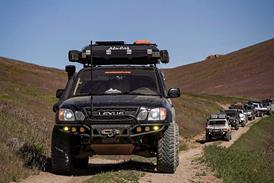





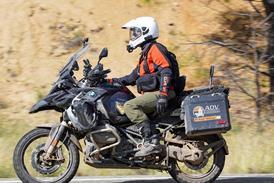








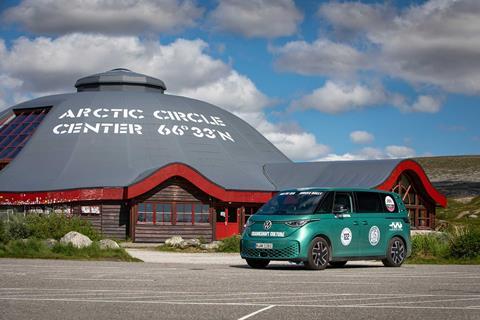








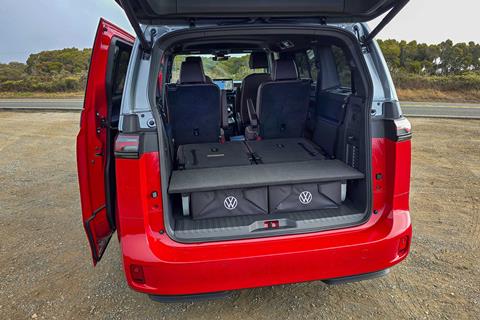





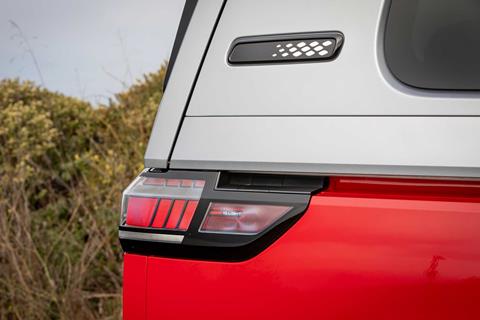







No comments yet